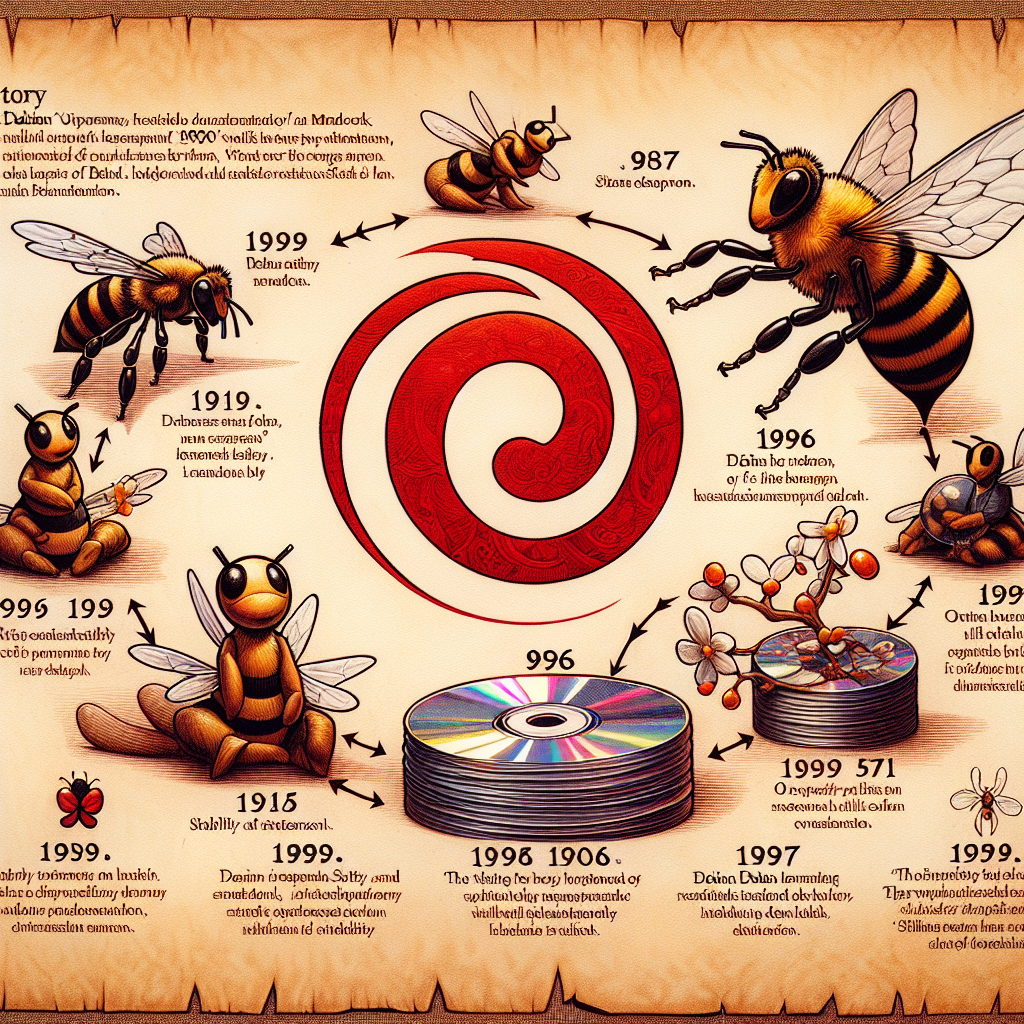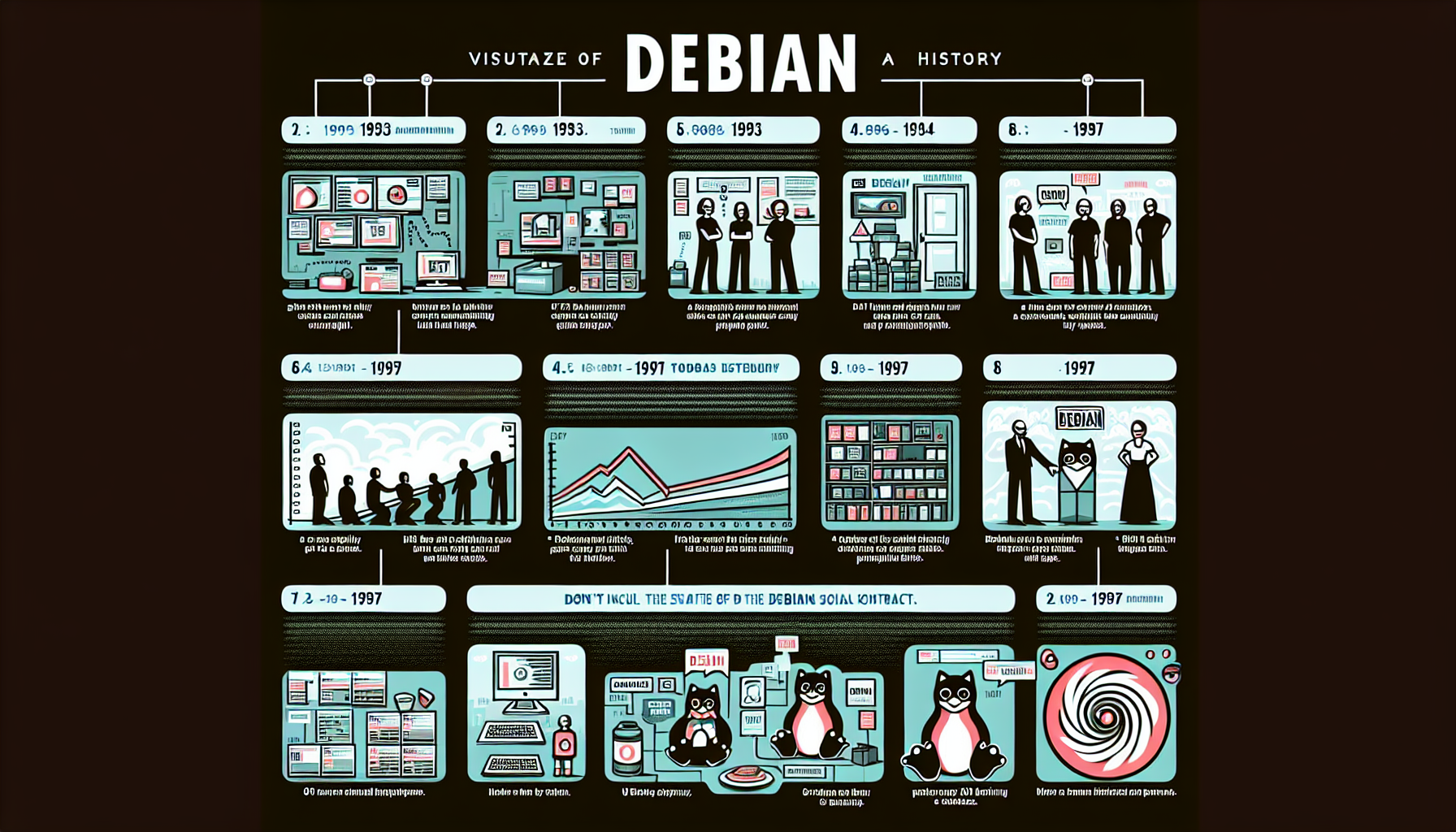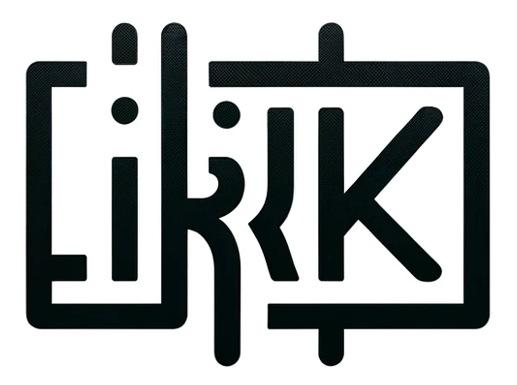
History of Debain
Debian is a free and open-source operating system that has a rich history dating back to its initial release in 1993. It was created by Ian Murdock, who aimed to develop a distribution of Linux that would be easy to use, stable, and built collaboratively by a community of volunteers. Over the years, Debian has grown into one of the most influential and widely used Linux distributions, known for its commitment to free software principles, extensive package management system, and strong focus on stability and security. Today, Debian serves as the foundation for numerous other popular Linux distributions and continues to play a significant role in the open-source software ecosystem.
The Origins and Evolution of Debian: A Historical Overview
Debian, one of the most popular and influential Linux distributions, has a rich and fascinating history that spans over three decades. Understanding the origins and evolution of Debian is crucial to appreciating its significance in the world of open-source software.
The story of Debian begins in 1993 when Ian Murdock, a computer science student at Purdue University, set out to create a free and open-source operating system. Inspired by the GNU Project’s philosophy of software freedom, Murdock aimed to build a system that would be accessible to all and foster collaboration among developers.
Murdock’s vision materialized in August 1993 with the release of Debian 0.01, named after himself and his then-girlfriend, Debra. This initial version laid the foundation for what would become a community-driven project that prioritized stability, security, and ease of use.
As Debian gained traction, its community grew rapidly, attracting developers from around the world who shared a common goal: to create a reliable and versatile operating system. The project’s democratic structure, with its emphasis on open decision-making and meritocracy, allowed anyone to contribute and shape the future of Debian.
In 1996, the Debian Project adopted the Debian Free Software Guidelines (DFSG), a set of principles that defined the project’s commitment to software freedom. These guidelines ensured that all software included in Debian adhered to specific criteria, such as being freely distributable and modifiable.
The release of Debian 2.0, codenamed “Hamm,” in 1998 marked a significant milestone for the project. It introduced the Advanced Packaging Tool (APT), a powerful package management system that simplified software installation and updates. APT’s efficiency and reliability quickly became one of Debian’s defining features, setting it apart from other distributions.
Over the years, Debian continued to evolve and adapt to the changing landscape of technology. It embraced new architectures, expanded its package repository, and improved its infrastructure to support a growing user base. The project’s commitment to stability and security, coupled with its extensive package selection, made Debian a popular choice for servers and workstations alike.
In 2005, Debian faced a major challenge when a group of developers decided to fork the project and create a new distribution called Ubuntu. This split sparked debates within the Debian community about the project’s direction and governance. However, Debian remained resilient, and its core principles remained intact.
Today, Debian boasts a vibrant and diverse community of developers, maintainers, and users who collaborate to ensure the project’s success. Its influence extends beyond the realm of Linux distributions, with many other operating systems, such as Ubuntu and Linux Mint, building upon Debian’s foundations.
The release of Debian 10, codenamed “Buster,” in 2019 showcased the project’s continued commitment to excellence. It introduced numerous improvements, including enhanced security features, updated software packages, and improved hardware support.
Looking ahead, Debian’s future appears bright. Its community-driven approach and dedication to software freedom have allowed it to withstand the test of time. As technology continues to evolve, Debian will undoubtedly adapt and remain a cornerstone of the open-source ecosystem.
In conclusion, the history of Debian is a testament to the power of collaboration and the enduring value of software freedom. From its humble beginnings in 1993 to its current status as a leading Linux distribution, Debian has left an indelible mark on the world of open-source software. Its journey is a reminder that with a shared vision and a commitment to excellence, great things can be achieved.
Key Milestones and Releases in the History of Debian

Debian, one of the most popular and influential Linux distributions, has a rich and storied history. Since its inception in 1993, Debian has undergone numerous key milestones and releases that have shaped its development and solidified its place in the open-source community.
One of the earliest milestones in Debian’s history was the release of Debian 0.01 in September 1993. This initial release, created by Ian Murdock, laid the foundation for what would become a robust and versatile operating system. Debian 0.01 included a basic set of packages and a package management system that allowed users to easily install and update software.
As Debian gained popularity, the project continued to evolve and improve. In 1996, Debian 1.1, codenamed “Buzz,” was released. This release introduced significant enhancements, including support for multiple architectures and improved package management tools. Debian 1.1 marked a turning point for the project, as it demonstrated Debian’s commitment to stability and reliability.
In 1998, Debian 2.0, codenamed “Hamm,” was released. This release introduced the Advanced Packaging Tool (APT), a powerful package management system that revolutionized the way software was installed and updated on Debian systems. APT made it easier for users to manage dependencies and resolve conflicts, further enhancing Debian’s reputation for stability and ease of use.
Debian 2.2, codenamed “Potato,” was released in 2000. This release introduced significant improvements in hardware support, making Debian more accessible to a wider range of users. Additionally, Debian 2.2 included updated versions of popular software packages, ensuring that users had access to the latest features and security updates.
In 2002, Debian 3.0, codenamed “Woody,” was released. This release marked another major milestone for Debian, as it introduced support for the ARM architecture, expanding Debian’s reach to a new class of devices. Debian 3.0 also included improved internationalization support, making it easier for users around the world to use Debian in their native languages.
Debian 3.1, codenamed “Sarge,” was released in 2005. This release focused on improving security and stability, with enhanced security features and updated versions of key software packages. Debian 3.1 also introduced the Debian Installer, a user-friendly installation program that made it easier for new users to get started with Debian.
In 2007, Debian 4.0, codenamed “Etch,” was released. This release introduced support for the AMD64 architecture, further expanding Debian’s hardware compatibility. Debian 4.0 also included improved support for virtualization technologies, making it easier for users to run Debian on virtual machines.
Debian 5.0, codenamed “Lenny,” was released in 2009. This release focused on improving performance and usability, with updated versions of key software packages and enhanced hardware support. Debian 5.0 also introduced support for the PowerPC architecture, further expanding Debian’s reach.
In 2013, Debian 7.0, codenamed “Wheezy,” was released. This release introduced support for multiarch, allowing users to install and run software from multiple architectures on the same system. Debian 7.0 also included improved support for secure boot, ensuring that Debian could be installed on systems with this feature enabled.
Most recently, in 2017, Debian 9.0, codenamed “Stretch,” was released. This release focused on improving stability and security, with updated versions of key software packages and enhanced security features. Debian 9.0 also introduced support for the ARM64 architecture, further expanding Debian’s hardware compatibility.
Throughout its history, Debian has remained true to its principles of openness, collaboration, and freedom. The project’s commitment to these principles, combined with its focus on stability and reliability, has made Debian a favorite among developers, system administrators, and users alike. As Debian continues to evolve and adapt to new technologies and challenges, its rich history serves as a testament to the power and resilience of the open-source community.
The Impact of Debian on the Open Source Community: A Historical Perspective
Debian, one of the most influential Linux distributions, has had a profound impact on the open-source community since its inception in 1993. Its rich history and commitment to free software have made it a favorite among developers and users alike.
Debian was created by Ian Murdock, a computer science student at Purdue University. Murdock envisioned a Linux distribution that would be developed openly and collaboratively, with a strong focus on stability and security. He named the project after himself and his then-girlfriend, Debra Lynn.
From the beginning, Debian set itself apart from other distributions by its commitment to the principles of free software. The Debian Free Software Guidelines (DFSG) were established to ensure that all software included in the distribution met certain criteria, such as being freely redistributable and modifiable. This commitment to freedom has been a driving force behind Debian’s success and has helped shape the open-source movement as a whole.
One of Debian’s most significant contributions to the open-source community is its package management system, known as APT (Advanced Package Tool). APT revolutionized the way software is installed and updated on Linux systems, providing a simple and efficient way to manage dependencies and resolve conflicts. This system has since been adopted by numerous other distributions, further solidifying Debian’s influence.
Another key aspect of Debian’s impact on the open-source community is its emphasis on stability and security. Debian’s release cycle is known for its long development periods, rigorous testing, and conservative approach to updates. This focus on stability has made Debian a popular choice for servers and critical systems, where reliability is paramount. Additionally, Debian’s commitment to security has led to the development of tools and practices that have benefited the entire open-source ecosystem.
Over the years, Debian has grown into a massive project with a vibrant community of developers and users. The Debian Project is governed by a constitution that ensures democratic decision-making and encourages collaboration. This inclusive and transparent approach has fostered a sense of ownership and pride among Debian contributors, who work tirelessly to maintain and improve the distribution.
Debian’s impact extends beyond its own community. Many popular Linux distributions, such as Ubuntu and Linux Mint, are based on Debian. These distributions build upon Debian’s solid foundation, adding their own features and customizations. This widespread adoption of Debian-based distributions has helped bring Linux to a broader audience and has contributed to the overall growth of the open-source movement.
In conclusion, Debian’s historical impact on the open-source community cannot be overstated. Its commitment to free software, innovative package management system, focus on stability and security, and inclusive community have made it a cornerstone of the open-source ecosystem. As the Linux landscape continues to evolve, Debian’s influence will undoubtedly continue to shape the future of open-source software.
Conclusion
In conclusion, the history of Debian can be traced back to its origins in 1993 when Ian Murdock founded the project. Over the years, Debian has grown into one of the most influential and widely used Linux distributions, known for its stability, security, and commitment to free and open-source software. The project has a rich history of community-driven development, collaboration, and adherence to its founding principles. Today, Debian continues to thrive as a versatile and reliable operating system, serving a diverse range of users and contributing to the broader open-source ecosystem.
You may also like
19 comments
Leave a Reply to Live Basketball Streaming Cancel reply
Archives
Calendar
| M | T | W | T | F | S | S |
|---|---|---|---|---|---|---|
| 1 | 2 | 3 | 4 | 5 | ||
| 6 | 7 | 8 | 9 | 10 | 11 | 12 |
| 13 | 14 | 15 | 16 | 17 | 18 | 19 |
| 20 | 21 | 22 | 23 | 24 | 25 | 26 |
| 27 | 28 | 29 | 30 | 31 | ||

When I originally commented I clicked the “Notify me when new comments are added” checkbox and now each time a comment is added I get four emails with the same comment. Is there any way you can remove people from that service? Thanks!
Some truly interesting details you have written.Helped me a lot, just what I was searching for : D.
Write more, thats all I have to say. Literally, it seems as though you relied on the video to make your point. You definitely know what youre talking about, why waste your intelligence on just posting videos to your weblog when you could be giving us something informative to read?
Trustworthy and reliable, every single visit.
get cheap lisinopril without a prescription
Their international health workshops are invaluable.
The best in town, without a doubt.
gabapentin 400 mg pret
Their cross-border services are unmatched.
Drug information.
lisinopril 40 mg cost without insurance
Some trends of drugs.
I simply could not go away your website prior to suggesting that I actually loved the usual information an individual supply for your guests? Is gonna be back incessantly in order to check out new posts
Thank you for sharing with us, I believe this website really stands out : D.
Adorei este site. Para saber mais detalhes acesse nosso site e descubra mais. Todas as informações contidas são conteúdos relevantes e únicos. Tudo que você precisa saber está ta lá.
I think this is one of the most vital info for me. And i am glad reading your article. But should remark on some general things, The website style is perfect, the articles is really nice : D. Good job, cheers
I am only writing to let you be aware of what a really good experience my princess undergone going through your webblog. She mastered too many things, with the inclusion of what it is like to have an incredible coaching style to let many others quite simply know just exactly chosen specialized subject matter. You truly did more than our own expected results. Many thanks for imparting the interesting, dependable, revealing and cool tips on this topic to Ethel.
incrível este conteúdo. Gostei bastante. Aproveitem e vejam este conteúdo. informações, novidades e muito mais. Não deixem de acessar para se informar mais. Obrigado a todos e até mais. 🙂
obviously like your web site but you need to test the spelling on quite a few of your posts. Several of them are rife with spelling issues and I to find it very bothersome to inform the reality on the other hand I will definitely come back again.
I do not even know the way I finished up right here, however I thought this post was once good. I do not realize who you’re but definitely you’re going to a famous blogger if you are not already 😉 Cheers!
Howdy! Someone in my Myspace group shared this website with us so I came to look it over. I’m definitely enjoying the information. I’m book-marking and will be tweeting this to my followers! Fantastic blog and great style and design.
Skilled professionals working, expert-level attention to detail. Expert service discovered. Expert recognition.
Dry Cleaning in New York city by Sparkly Maid NYC
Hi, just required you to know I he added your site to my Google bookmarks due to your layout. But seriously, I believe your internet site has 1 in the freshest theme I??ve came across. It extremely helps make reading your blog significantly easier.
I am curious to find out what blog system you’re utilizing? I’m having some minor security problems with my latest website and I would like to find something more safeguarded. Do you have any suggestions?